major works in English translation
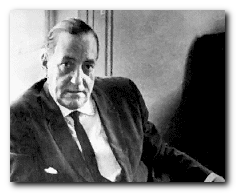 Alejo Carpentier was a Cuban writer who straddled the connection between European literature and the native culture of Latin-America. He was for a long time the Cuban cultural ambassador in Paris. Carpentier was trying to place Latin-American culture into a historical context. This was done via a conscious depiction of the colonial past – as in The Kingdom of This World, and Explosion in a Cathedral (title in Spanish El Siglo de las Luces – or The Age of Enlightenment).
Alejo Carpentier was a Cuban writer who straddled the connection between European literature and the native culture of Latin-America. He was for a long time the Cuban cultural ambassador in Paris. Carpentier was trying to place Latin-American culture into a historical context. This was done via a conscious depiction of the colonial past – as in The Kingdom of This World, and Explosion in a Cathedral (title in Spanish El Siglo de las Luces – or The Age of Enlightenment).
His literary style is a wonderful combination of dazzling images and a rich language, full of the technical jargon of whatever subject he touches on – be it music, architecture, painting, history, or agriculture.
He was also the first to use the techniques of ‘magical realism’ (and he coined the term, lo real maravilloso) in which the concrete, real world becomes suffused with fantasy elements, myths, dreams, and a fractured sense of time and logic.
Carpentier is generally considered one of the fathers of modern Latin American literature. His complex, baroque style has inspired such writers as Gabriel García Márquez and Carlos Fuentes.
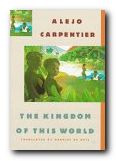 The Kingdom of This World is a marvelously compressed account of the slave uprising and first revolution of the early nineteenth century in San Domingo – now Haiti. Carpentier uses ‘magical realism’, long before it became fashionable, to depict the contradictions between political reality and religious or mythical beliefs. The story passes rapidly in a series of vivid scenes from the early unsuccessful uprising led by Macandal, then Bouckman who led Haiti in its fight for independence from France, and finally to Henri Christophe the revolutionary leader who later became Emperor of Haiti, and who built Sans Souci and La Ferrière Citadel.
The Kingdom of This World is a marvelously compressed account of the slave uprising and first revolution of the early nineteenth century in San Domingo – now Haiti. Carpentier uses ‘magical realism’, long before it became fashionable, to depict the contradictions between political reality and religious or mythical beliefs. The story passes rapidly in a series of vivid scenes from the early unsuccessful uprising led by Macandal, then Bouckman who led Haiti in its fight for independence from France, and finally to Henri Christophe the revolutionary leader who later became Emperor of Haiti, and who built Sans Souci and La Ferrière Citadel.
![]() Buy the book at Amazon UK
Buy the book at Amazon UK
![]() Buy the book at Amazon US
Buy the book at Amazon US
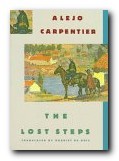 The Lost Steps (1953) is a story told twice. A disillusioned north-American musicologist flees his empty existence in New York City. He takes a journey with his mistress to one of the few remaining areas of the world not yet touched by civilization – the upper reaches of a great South American river (which we take to be the Amazon). The novel describes his search, his adventures, the revival of his creative powers, and the remarkable decision he makes about his life in a village that seems to be truly outside history. This novel offers a wonderful evocations of Latin America from the founder of ‘Magical Realism’.
The Lost Steps (1953) is a story told twice. A disillusioned north-American musicologist flees his empty existence in New York City. He takes a journey with his mistress to one of the few remaining areas of the world not yet touched by civilization – the upper reaches of a great South American river (which we take to be the Amazon). The novel describes his search, his adventures, the revival of his creative powers, and the remarkable decision he makes about his life in a village that seems to be truly outside history. This novel offers a wonderful evocations of Latin America from the founder of ‘Magical Realism’.
![]() Buy the book at Amazon UK
Buy the book at Amazon UK
![]() Buy the book at Amazon US
Buy the book at Amazon US
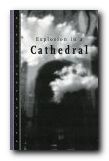 Explosion in a Cathedral is set in Cuba at the time of the French Revolution. The novel aims to capture the immense changes sweeping the Caribbean at the end of the eighteenth and the beginning of the nineteenth century – complete with its wars, sea-life, and people. It is a biographical novel which focuses on the adventures of Victor Hughes, a historical figure who led the naval assault to take back the island of Guadeloupe from the English. This is a historical novel of epic proportions, reflected in its Spanish title, El siglo des luces (The Age of Enlightenment)
Explosion in a Cathedral is set in Cuba at the time of the French Revolution. The novel aims to capture the immense changes sweeping the Caribbean at the end of the eighteenth and the beginning of the nineteenth century – complete with its wars, sea-life, and people. It is a biographical novel which focuses on the adventures of Victor Hughes, a historical figure who led the naval assault to take back the island of Guadeloupe from the English. This is a historical novel of epic proportions, reflected in its Spanish title, El siglo des luces (The Age of Enlightenment)
![]() Buy the book at Amazon UK
Buy the book at Amazon UK
![]() Buy the book at Amazon US
Buy the book at Amazon US
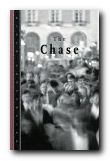 The Chase is set in Havana of 1956 where Batista’s tyrannical rule serves as the backdrop for the story of two young men whose lives become intertwined with the prostitute, Estrella. An anonymous man flees a team of shadowy, relentless political assassins, and ultimately takes refuge in a public auditorium during a performance of Beethoven’s Eroica Symphony. This novella is particularly interesting because of the multiple, disjointed narrations and its polyphonic structure.
The Chase is set in Havana of 1956 where Batista’s tyrannical rule serves as the backdrop for the story of two young men whose lives become intertwined with the prostitute, Estrella. An anonymous man flees a team of shadowy, relentless political assassins, and ultimately takes refuge in a public auditorium during a performance of Beethoven’s Eroica Symphony. This novella is particularly interesting because of the multiple, disjointed narrations and its polyphonic structure.
![]() Buy the book at Amazon UK
Buy the book at Amazon UK
![]() Buy the book at Amazon US
Buy the book at Amazon US
Alejo Carpentier web links
Alejo Carpentier at Mantex
Biography, tutorials on the novels, novellas, and stories
![]() Carpentier at Wikipedia
Carpentier at Wikipedia
Background, biography, magical realism, major works, literary style, further reading
![]() Carpentier at Amazon UK
Carpentier at Amazon UK
Novels, criticism, and interviews – in Spanish and English
![]() The Kingdom of this World
The Kingdom of this World
Lecture by Rod Marsh – University of Cambridge
![]() Carpentier at Internet Movie Database
Carpentier at Internet Movie Database
Films and TV movies made from his novels
![]() Carpentier in Depth
Carpentier in Depth
Spanish video documentary and interview with Carpentier (1977)
© Roy Johnson 2004
More on Alejo Carpentier
More on the novella
More on literary studies
More on short stories